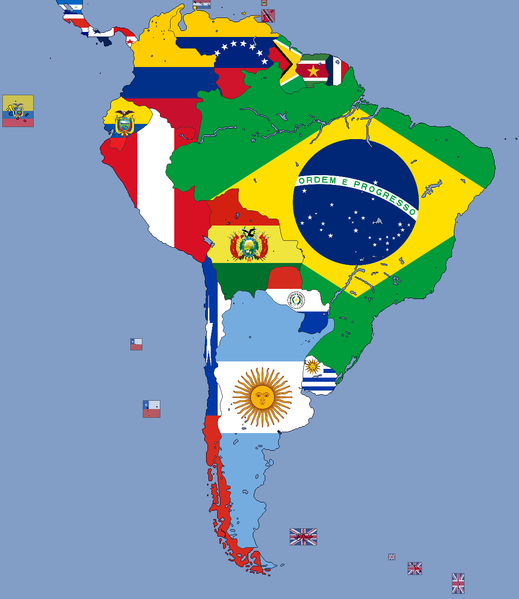
Home to some of the most corrupt countries, people, and practices, Latin America has never been regarded as a model of transparency. Latin America can be defined as South America, Central America, the Caribbean Islands, as well as Mexico. Another way of defining Latin America is through the predominance of Romance languages: Spanish, Portuguese, French, or other languages derived from these. One could define corruption ‘as the provision of material benefits to politicians or public officials in exchange for illicit influence over their decisions’. This can include a whole host of activities, including bribes, scandals, embezzlement, illicit payments, favours, and more. Importantly, this can occur on national levels but also at lower bureaucratic levels, often both in the public sector and in relation to criminal organisations.
So, what are some of the greatest cases of Latin American corruption? There isn’t a place better to start than Brazil’s Odebrecht corruption scandal. Odebrecht is a Latin American construction giant, responsible for some of the region’s most crucial infrastructure projects. The company had been caught up in Operacao Lava Jato, ‘Brazil’s corruption probe into the state oil giant Petrobras’. Dozens of companies paid bribes to politicians and other officials in exchange for contracts with Petrobras. Odebrecht executives have confessed to paying bribes in exchange for Petrobras contracts not only in Brazil but in other countries, many of which are in Latin America. The former boss, Marcelo Odebrecht, even illegally paid millions to Dilma Rouseff and Michael Temer’s 2014 Brazilian presidential election campaign. In 2016, the Brazilian-based group confessed to its corruption and agreed to pay £2.1 billion in fines. Dozens of executives were jailed, and simultaneously, such discoveries had a significant impact on the state of politics and the economy within Latin America.
On the other hand, even Sports could not escape corruption. Reynaldo Vasquez, the former El Salvador football chief was given a 16-month prison sentence in the US for his involvement in a bribery scandal. This saw him and other officials accept hundreds of thousands of dollars from television companies in exchange for broadcasting rights to El Salvador’s matches. This included the 2018 World Cup qualifier and friendly matches.
Alternatively, Christina Férnandez De Kirchner, the current Vice President of Argentina, was found guilty of fraudulent administration. She created ‘a kickback scheme that steered lucrative public work contracts to friends of hers in return for bribes.’ It was accused that the scheme had cost the Argentine government over £800 million. The fact she is still currently Vice President, having been President previously, is a testament to the corrupt nature of Latin American politics.
It is important to consider the role of criminal organisations in Latin America’s corruption. This can be taken back to the 80’s which saw the rise of infamous figures like Colombia’s ‘King of Cocaine’ Pablo Escobar and Mexico’s El Padrino (The Godfather), Miguel Gallardo. Both men were responsible for founding just two of Latin America’s famous drug cartels, namely the Medellín Cartel and the Guadalajara Cartel. A reason both organisations were able to flourish in Latin America’s underworld is due to the institutional corruption of the police forces. The acceptance of bribes from the cartels placed the police in the pockets of drug lords, which allowed the cartels to conduct their business knowing the police were on their side. While not on the same scale, these activities still occur today in many Latin American countries.
But why is Latin America corrupt by nature? Several reasons can be drawn upon. The ‘wave of democratisation that has swept across Latin America over the last 25’ years is notable. By dispersing power and requiring the approval of many institutions in relation to decision-making, democracy has led to an increase in the number of actors who can demand or receive bribes. But this cannot be the only reason, given the authoritarian past in Mexico and the long-established democracy in Venezuela. Another motivation is politicians, who increasingly appeal to ‘the masses’ during campaigns. This requires costly, media-based politics, giving incentives to resort to corruption.
This political and institutional corruption on a national level, combined with the vast criminal underworlds of Latin American countries, has had a trickle-down effect that has reached ordinary citizens in their day-to-day lives. From large government scandals to everyday encounters with the police, the Global Corruption Barometer for Latin America and the Caribbean found 47% of people regarding the police and elected representatives as corrupt. Bribery was found to be most common in Mexico and the Dominican Republic, where, among those surveyed, 51% and 46% paid bribes to access public services, respectively.
Ultimately, corruption has led to vast wealth disparities. ‘In at least eight countries, the richest 20% of the population hold over half the countries income’; thus, one could deem corruption a part of Latin American life, leading to well-known expressions like ‘rouba, mas faz’ in Brazil, meaning ‘he steals, but also gets things done.’
Image: Flag Map of South America, Geography and Space, 2021//CC BY-SA 4.0 DEED



Average Rating